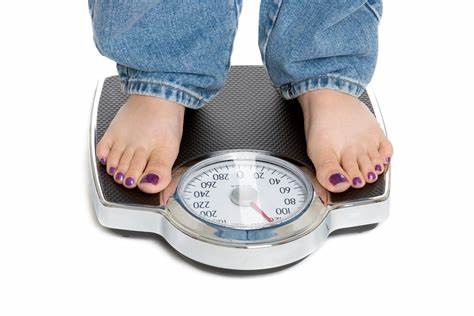Let’s be honest—losing weight is one of the most common goals people set, yet also one of the hardest to maintain. The internet is packed with quick fixes, miracle diets, and extreme workout plans promising dramatic results in no time. But if you’ve tried any of those, you likely know the truth: they don’t last.

That’s because real, lasting weight loss isn’t about deprivation or punishment. It’s about understanding your body, changing habits, and creating a lifestyle you can actually enjoy. In this guide, we’re breaking down how to lose weight the right way—without starving, stressing, or sabotaging yourself.
If you’re ready for a realistic, science-backed, and sustainable approach, this is the article you’ve been looking for.
1. Why Most Diets Fail (and What Actually Works)
The failure rate of traditional diets is alarmingly high. Studies show that up to 95% of people who lose weight on restrictive diets gain it back within a few years. Why? Because those diets usually involve:
- Too much restriction (cutting out entire food groups)
- Unrealistic expectations
- Lack of flexibility
- No focus on long-term habits
The good news? You don’t need to go to extremes. What actually works is a moderate, consistent approach that includes real food, movement, mindset shifts, and habits that stick.
2. Set SMART Goals, Not Vague Wishes
One of the biggest mistakes people make is setting goals like “I want to lose weight” without a plan. That’s where SMART goals come in—goals that are:
- Specific
- Measurable
- Achievable
- Relevant
- Time-bound
Instead of “I want to lose weight,” try:
“I want to lose 10 pounds in 12 weeks by walking 30 minutes daily and eating balanced meals 80% of the time.”
This kind of clarity sets you up for success.
3. Understand Your Caloric Needs Without Obsessing
Weight loss, at its core, is about energy balance—you need to burn more calories than you consume. But this doesn’t mean you have to count every bite.
Start with a rough estimate of your Total Daily Energy Expenditure (TDEE), and aim for a modest calorie deficit (around 300–500 calories per day is safe and sustainable).
Rather than starving yourself, focus on nutrient-dense foods that fill you up with fewer calories:
- Vegetables
- Lean proteins
- Whole grains
- Healthy fats
The key? Eat enough to feel satisfied, not stuffed.
4. Build a Plate That Supports Weight Loss
Forget complicated diet rules. A simple method that works for most people is the “Healthy Plate Method”:
- ½ plate veggies (fiber, volume, nutrients)
- ¼ plate protein (chicken, tofu, fish, eggs)
- ¼ plate complex carbs (brown rice, sweet potato, quinoa)
- Add healthy fats like olive oil, avocado, or nuts
This combo supports satiety, blood sugar control, and steady energy—all important for lasting weight loss.
5. Ditch the All-or-Nothing Mentality
You don’t need to be perfect to see progress. In fact, perfection is the enemy of progress.
A single slice of cake or skipped workout doesn’t ruin everything. It’s what you do consistently that matters most. Adopting a flexible mindset helps you:
- Bounce back from slip-ups
- Reduce guilt and stress around food
- Make sustainable choices
Strive for progress, not perfection, and you’ll get further—without burning out.
6. Prioritize Protein (Here’s Why It Matters)
Protein is your weight-loss best friend. Here’s why:
- It helps preserve lean muscle while losing fat
- It boosts satiety, so you stay fuller longer
- It increases the thermic effect of food (you burn more calories digesting it)
Aim for 25–35% of your daily calories from protein. That’s about 0.7–1 gram per pound of body weight, depending on activity level.
Good sources include:
- Chicken breast
- Greek yogurt
- Eggs
- Lentils and beans
- Protein powder (as a supplement, not a meal replacement)
7. Move Your Body Daily (But Don’t Overdo It)
Exercise is essential—not just for burning calories but for boosting metabolism, improving mood, and building strength. But you don’t need to spend hours in the gym.
Start with movement you enjoy:
- Brisk walking
- Strength training 2–3x per week
- Yoga or stretching
- Dancing, swimming, hiking
Aim for at least 150 minutes of moderate activity per week, plus strength training for muscle maintenance. Remember, consistency trumps intensity.
8. Sleep: The Secret Weight Loss Weapon
If you’re not sleeping enough, weight loss becomes an uphill battle. Poor sleep affects:
- Hunger hormones (ghrelin goes up, leptin goes down)
- Cravings (especially for sugar and carbs)
- Energy levels, making workouts harder
- Stress response, which can promote fat storage
Aim for 7–9 hours of quality sleep per night, and set a calming bedtime routine that helps you unwind.
9. Manage Stress—Because Cortisol Matters
Chronic stress can sabotage your weight loss by increasing cortisol, a hormone that encourages fat storage (especially around the belly). It also triggers emotional eating and reduces motivation.
Try these strategies to keep stress in check:
- Deep breathing or meditation
- Daily movement
- Journaling
- Spending time outdoors
- Limiting screen time and social media
Even just 10 minutes a day can make a difference.
10. Track Progress Beyond the Scale
Weight isn’t the only measure of success. In fact, focusing solely on the scale can be discouraging due to normal fluctuations.
Look at non-scale victories:
- Clothes fitting better
- More energy
- Improved digestion
- Better sleep
- Stronger workouts
- Healthier relationship with food
Take progress photos, measure body circumference, and celebrate those wins—they’re all signs that you’re moving in the right direction.
11. Hydration Helps More Than You Think
Many people confuse thirst with hunger, leading to extra snacking. Staying hydrated helps with:
- Appetite control
- Digestion
- Energy
- Workout recovery
Aim for 8–10 cups of water daily, more if you’re active or live in a hot climate. Adding lemon, cucumber, or mint can make it more enjoyable.
12. Make It a Lifestyle, Not a Phase
If you approach weight loss like a temporary project, you’ll likely end up where you started—or worse. The real goal is to create healthy habits you can sustain for life.
This means:
- Learning what works for you
- Giving yourself grace and patience
- Being consistent, even when motivation fades
- Focusing on how you feel, not just how you look
Weight loss isn’t a race. It’s a journey—and the more realistic your approach, the more likely you are to succeed.
Conclusion: Real Weight Loss Starts with Real Change
You don’t need a crash diet, expensive detox, or punishing workout plan to lose weight. What you do need is a solid foundation of smart habits, consistent effort, and self-compassion.
The right way to lose weight is the one that fits your life—not flips it upside down. Focus on fueling your body, moving with purpose, and taking care of your mind, and the results will follow.
Remember: You don’t need to be perfect—you just need to keep going.

